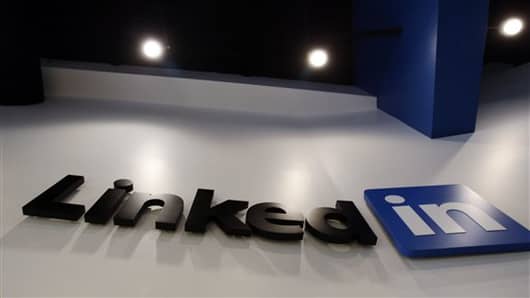LinkedIn beat expectations, but growth across all three of its divisions, and member growth to 225 million, didn't help its stock, which plummeted ten percent after-hours. Wall Street focused on LinkedIn's disappointing Q2 outlook, which fell short of expectations, indicating that the company's growth will slow over the course of the year. What happened?
On the earnings call CEO Jeff Weiner talked about the success of new products it's introduced—like search, and a more automated hiring tool, with features like 'people you may want to hire.' As with Facebook (FB), LinkedIn is seeing ongoing growth in mobile usage. The company announced that with its new iPhone and Android apps it's seeing more than 40 percent increase in likes and comments per unique user. And it promoted the fact that its new 'Contacts' tool is its first that's launched on mobile and the desktop at the same time.
The business network's revenue grew 72 percent to $325 million, while Wall Street had been expecting $317 million. Earnings per share tripled from a year ago to 45 cents (non—GAAP diluted EPS), fourteen cents more than expectations. And growth is consistent across the board, with its biggest division, Talent Solutions, growing revenue 80 percent to $184 million. The two smaller divisions, Marketing Solutions (ads), and premium subscriptions, grew 56 percent and 73 percent respectively.





